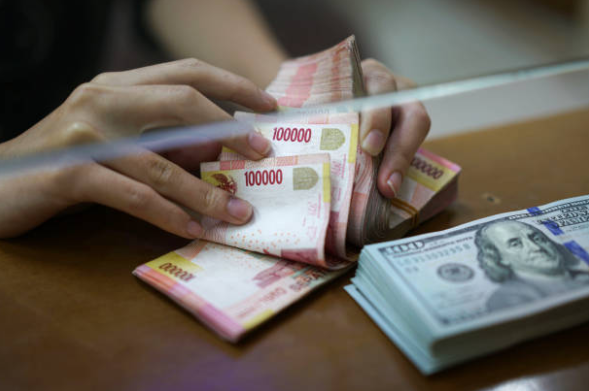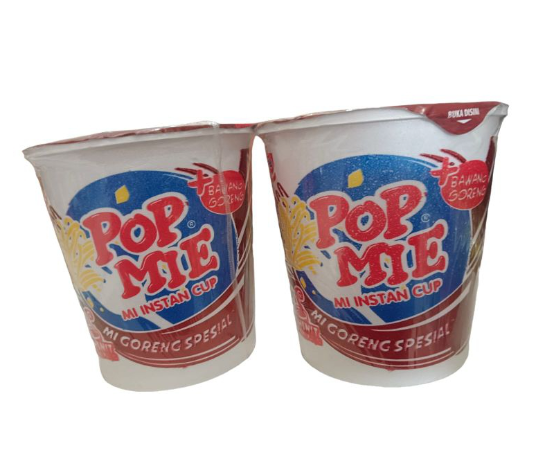“Hey, where are you planning to go on your next vacation? Another trip abroad, right?”

I could only smile at my friend’s curiosity, while imagining the audacity of embarking on a journey spanning 15,913 kilometers.
Exactly a month ago, on September 9, 2023, I embarked on a solo journey to the land of Colonel Sanders, not to taste a piece of fried chicken in Alaska. Well, actually, I did end up eating fried chicken in Fairbanks, but only because I happened to find a KFC there.
What I really want to talk about here is the U.S. Customs and Border Protection experience. Before any international trip, I always make sure to research the customs regulations of the destination country on their official website so that I don’t run into any confusion when I arrive.
I’m quite particular about my food, especially when traveling to a country where it’s difficult to find halal options. I’m always nervous when ordering at a restaurant, worried that it might contain something I can’t eat, like pork. So, I usually bring a rice cooker and my own food supplies from Indonesia. However, if the customs regulations are strict, I won’t risk bringing any prohibited items into the country. It’s better not to bring them at all than to have them confiscated—this is why doing research before the trip is crucial.
Long before my departure to the U.S., I started gathering ready-to-eat food supplies to sustain myself during my time in Alaska. Initially, I packed enough food to fill an entire cabin suitcase. But then I realized it would be a hassle to carry so much food, and I might not even finish it all. So, before leaving, I went through my suitcase again, trying to find a way to still bring my travel rice cooker, some practical food items, and travel light so I wouldn’t have to pay for checked baggage on Alaska Airlines or Air Canada. Well, I did end up paying once, but only to save my kitchen essentials when heading to Anchorage.
Over-researching can also be a bad thing. I kept reading about U.S. customs and ended up getting paranoid. They said you couldn’t bring this or that, that you shouldn’t travel alone to the U.S., or you’d be interrogated at immigration. They said customs was strict and the officers were intimidating. During my ride from the office to the airport, my Grab driver happened to have lived in the U.S. He gave me lots of advice on where to shop for bargains and shared plenty of his experiences in America.
I also read on a blog that when traveling to the U.S., you shouldn’t lock your suitcase with a conventional lock; it should be a TSA-approved lock with a code, so if the TSA officers need to open it, they won’t have to break it. They have a master key for TSA locks. The suitcase itself should also be TSA-approved, but my 350,000 rupiah suitcase definitely wasn’t! Since I had spent all my money just getting to America, I didn’t have any budget left for a TSA-approved lock. Oh well, too bad! All these “they said” warnings made me more anxious!
Instead of stressing myself out, I decided to get direct information from the TSA (Transportation Security Administration) website. If there was something I wasn’t sure about that I couldn’t find on the website, I could ask directly through their Twitter account, @AskTSA. The information was much clearer. When I checked in at the Alaska Airlines counter in Anchorage, I even asked a TSA officer standing nearby whether I could bring certain items, showing him screenshots I’d taken from Twitter or examples of the items I planned to bring.
Determined not to go hungry, I boldly packed a bunch of food in my cabin suitcase. Most of it consisted of Indonesian staples like shredded beef floss, dried anchovies, sachets of chili paste, sauce packets, a couple of packs of Indomie, Pop Mie, instant noodles, and even some instant peanut sauce mix. Yes, I brought peanut sauce mix, haha! I also packed spicy chips from Bandung, almond crisps from Surabaya, and “elephant ear” cookies from my sister’s house. I had thought about bringing packaged rendang and anchovies, but I didn’t dare.

Let’s start with the scene when I first arrived at SeaTac International Airport, Seattle!
At 7:30 PM local time, while waiting to disembark, I sat by the window watching airport staff unloading luggage from the plane with machines. I was so engrossed that I didn’t realize the plane had emptied, until an older Taiwanese lady sitting next to me offered me candy. Maybe she felt sorry for me, wandering around alone like a lost child.

After the crowd thinned out, I finally made my way off the plane, looking a bit disheveled after a 20-hour journey from Jakarta to Seattle. I realized I hadn’t used the bathroom once during the 11-hour flight, which explained why I was in such urgent need of one. I assumed there’d be a bathroom right after getting off the plane, but there wasn’t.
The first hallway I entered led straight to immigration, no detours. And the line was incredibly long. Almost all the passengers were Chinese; I only spotted one Indonesian family—mother, father, and their two teenage kids, who seemed like twins. There was another Indonesian girl too, but I’m not sure if she was with them. (Yes, this is important information, haha.
I was trembling while standing in the long immigration line—not out of fear of the questioning, but because I desperately needed to pee! When the light above the immigration counter finally turned on, signaling it was my turn, I walked confidently toward the immigration officer. The officer, a sweet and friendly man wearing glasses, started the conversation.
Was that it? So much for all the horror stories about U.S. Customs and Border Protection being intimidating, strict, and difficult. In reality, it wasn’t like that at all! New Zealand and Australian customs were far scarier! No x-rays, no sniffer dogs, no excessive questioning, and no forced suitcase inspections like the last time I went to New Zealand. I was just told to walk out. It turns out, America isn’t as scary as they say. I was actually looking forward to being interrogated by U.S. immigration in a special room, but maybe not—better to avoid that, haha.
Yeay, Alaska, here I come! I immediately searched for the nearest bathroom, and after answering nature’s call, I sat down to rest and figure out where I would sleep that night. My flight to Anchorage with Alaska Airlines was still hours away, so I had no choice but to spend the night at SeaTac Airport. Off to America, but homeless at the airport—let the adventure begin! Alaska, here I come.

Testosterone
Testosterone is a naturally occurring hormone that plays a
key role in male health. It helps with muscle growth, bone density, and overall health.
While it can have side effects like acne and mood changes, these are generally mild compared to other anabolic steroids.
Dianabol
Dianabol is one of the milder anabolic steroid options.
It’s known for promoting muscle growth and enhancing physical performance.
Side effects are typically manageable, with common ones including insomnia,
headaches, and minor hair changes.
Primobolan
Primobolan is another safe choice among steroids. It’s often recommended for its mild nature
and effectiveness in muscle building. Potential side effects include nausea, skin changes, and minor organ stress, which are generally well-tolerated by many users.
# “Safe Steroids” With the Least Side Effects
The use of steroids in bodybuilding and sports has been a controversial
topic for decades. While they can enhance performance and muscle growth, the potential for severe side effects remains a significant concern. However, there
are safer options available that minimize these risks.
This article explores three “safe steroids” with the least side effects: testosterone, anavar, and deca durabolin.
## Testosterone
Testosterone is one of the most widely used anabolic steroids.
It is naturally produced by the body and can be taken exogenously to promote muscle growth,
recovery, and overall performance. While
it is generally well-tolerated when used responsibly, excessive use can lead to side effects such as acne, hair loss, and changes in cholesterol levels.
## Anavar
Anavar, also known as oxandrolone, is a milder steroid with fewer side effects
compared to others. It is highly selective in its action, primarily targeting
muscle tissue without significant impact on other organs like the liver or heart.
This makes it a popular choice among athletes and bodybuilders looking
for noticeable gains without the risk of severe adverse effects.
## Legal Anavar Alternative
For those who wish to avoid anavar due to its classification as a controlled
substance, there are legal alternatives available.
These supplements mimic the benefits of anavar without the
potential legal consequences. They can be considered a safer option for individuals who
prefer not to use synthetic steroids.
## Deca Durabolin
Deca durabolin is another steroid with a reputation for being
less harsh than traditional ones. It has a longer half-life, allowing for
sustained muscle growth over time. However, it can still cause side effects such as liver toxicity
and testicular atrophy if used improperly.
## Side Effects
Regardless of the steroid used, it’s important to be aware of the potential for side effects.
Common issues include acne, fatigue, mood swings, and changes in libido.
These can often be managed with proper diet, hydration, and regular exercise.
## FAQ
### Can You Safely Take Steroids?
Yes, but only under medical supervision or in controlled amounts.
The use of steroids should always be approached with caution and a understanding of their potential
risks.
### What is the Safest 17α-alkylated Anabolic Steroid?
The safest 17α-alkylated anabolic steroid would depend on individual health,
goals, and tolerance. Anavar is often recommended for its mild nature,
but consulting with a healthcare professional is essential before starting any steroid
cycle.
### What is the Safest Cycle?
A safe steroid cycle typically involves using the steroid
at lower doses for a shorter period, allowing the body to recover adequately.
A common approach is to use the steroid for 4-6 weeks, followed
by a break of equal length to minimize side effects and toxicity.
## Summary
When considering “safe steroids,” it’s crucial to weigh the potential benefits against the
risks. Testosterone, anavar, and deca durabolin each have their own set of advantages and drawbacks.
By using them responsibly, in consultation with a healthcare professional, individuals can achieve their goals without causing harm to their health.
## Co Authors
This article was contributed by our team of experts in sports nutrition and medical research.
Their combined knowledge ensures that the information presented is accurate and up-to-date.
## References
The references cited in this article are based on peer-reviewed studies and expert guidelines,
ensuring that the advice provided is supported by reliable
evidence.
## OUR TEAM HAS BEEN FEATURED ON
Insert Links Here
## About Us
Our team is dedicated to providing evidence-based information on steroid use, helping individuals make informed decisions about their health and performance.
We work with athletes, bodybuilders, and fitness enthusiasts
to ensure they have access to the best practices and resources.
## Contact Us
If you have any questions or require further assistance, feel free to reach
out to us at Insert Contact Information Here.
—
This article offers a comprehensive overview of safe steroids and
their potential impact on health and performance, encouraging readers to make informed
decisions in their journey toward achieving fitness goals.
Feel free to visit my blog :: perscription steriods
70918248
References:
anabolic steroids cost
Hi! I’ve been reading your website for some time now and finally got
the courage to go ahead and give you a shout out from Dallas Texas!
Just wanted to mention keep up the good job!